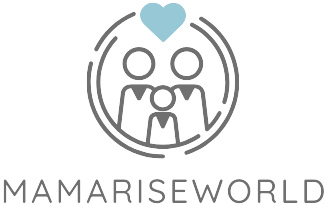Table of Contents
ToggleIn a world where the traditional school bell rings louder than a coffee shop’s espresso machine, many parents are asking: is homeschooling expensive? It’s a question that stirs up visions of pricey textbooks, fancy curricula, and a never-ending supply of art supplies. But hold your horses! Before diving into the financial deep end, let’s explore what homeschooling really costs—and what it doesn’t.
Is Homeschooling Expensive?
Many parents wonder about the financial aspect of homeschooling. Actual costs can vary significantly based on several factors, such as location, chosen materials, and educational methods. Parents often assume they need expensive textbooks and premium curricula. In reality, numerous affordable and free resources are available, including online courses, library materials, and community programs.
Cost analysis reveals that public school spending averages about $13,000 per student annually. In contrast, homeschooling costs can range from $200 to $2,500 yearly, depending on the approach and resources used. Families selecting a minimalistic approach may spend closer to the lower end of this spectrum, while those desiring more structured curricula might invest more.
Extracurricular activities can also impact homeschooling costs. Music lessons, sports teams, and field trips contribute to overall expenses. Options often exist in public institutions, resulting in significant savings for families. Those engaging in co-ops or shared resources often experience further financial relief.
Parents can choose to limit expenses by focusing on specific subjects or areas of interest. This flexibility allows them to tailor their approach to their children’s needs, often leading to enhanced learning experiences. Some families even utilize used books or swap curricula with other homeschooling families, reducing costs significantly.
Ultimately, understanding the multiple dimensions of homeschooling expenses aids parents in making informed decisions. Each family’s unique situation influences the overall cost, reinforcing the significance of evaluating individual circumstances and available resources.
Factors Influencing Costs

Understanding the various factors influencing homeschooling costs helps parents make informed financial decisions. Costs primarily revolve around choices in curriculum, learning materials, and extracurricular activities.
Curriculum Choices
Curriculum choices significantly impact overall expenses. Some parents opt for free or low-cost resources like online courses and community programs, while others invest in comprehensive, structured curricula. Prices for commercial curricula range from a few hundred dollars to over a thousand annually. Focusing on specific subjects can help families prioritize spending, ensuring each child learns effectively without breaking the bank.
Learning Materials
Learning materials also contribute to homeschooling budgets. Families can choose between expensive textbooks or utilize affordable materials such as library resources, downloadable worksheets, and educational websites. Secondhand books and curriculum swaps offer additional savings opportunities. Selecting budget-friendly options allows parents to provide quality education while keeping costs manageable.
Extracurricular Activities
Extracurricular activities present another area of expense. Participation in music lessons, sports teams, and field trips can add up quickly. Many public institutions offer affordable options, which can reduce overall costs. Forming co-ops allows families to share resources and lower the financial burden of extracurriculars. Emphasizing community involvement enables parents to create rich educational experiences without overspending.
Comparing Expenses
Examining the costs associated with homeschooling versus traditional schooling reveals significant differences. Public schools typically average about $13,000 per student annually, covering expenses such as administration, teachers, and facilities. In contrast, homeschooling can range from $200 to $2,500 yearly, depending on materials and methods chosen. Parents may utilize free online resources or community programs, reducing costs. Structured curricula may increase spending, while minimalist approaches often remain budget-friendly. Considering unique interests can help families tailor expenses to their specific situations.
Homeschooling vs. Traditional Schooling
Understanding the financial implications of homeschooling compared to traditional schooling illustrates distinct cost structures. Traditional schooling incorporates costs like transportation and meals, which homeschooling bypasses. Parents engaging in homeschooling may not encounter these extra expenses. With a diverse range of affordable curricula available, families often find options that fit their budgets. Some parents utilize library materials, online content, or low-cost textbooks to enhance learning. Overall, choosing homeschooling can lead to considerable savings when compared to public schooling expenditures.
Regional Cost Variations
Regional differences significantly impact homeschooling costs and choices. Families residing in urban areas might face higher prices for educational materials than those in rural regions. While some states offer funding or tax credits for homeschoolers, others provide limited support. These financial factors can play a crucial role in shaping a family’s homeschooling journey. Access to libraries and community resources varies, potentially influencing expenses. By recognizing these regional variations, parents can better navigate their education budgets and make informed choices tailored to their location.
Budgeting for Homeschooling
Homeschooling can be managed effectively with a well-planned budget. Parents should first assess their unique educational goals and resources available in their community.
Cost-Effective Strategies
Maximizing resources is key to a cost-effective homeschooling experience. Utilizing free online platforms, local libraries, and educational apps can significantly reduce expenses. Consider joining co-ops where families share resources and teaching responsibilities, leading to lower costs. Purchasing used textbooks or organizing curriculum swaps can also save money. Exploring community programs often provides access to additional educational activities without added expense. Tailoring the education plan to focus on specific subjects of interest keeps costs manageable and enhances engagement.
Funding and Scholarships
Funding opportunities exist to mitigate homeschooling expenses. Some states offer financial assistance or tax credits specifically for homeschoolers, which can lessen the financial burden. Various nonprofits award scholarships to families committed to homeschooling. Researching local organizations can uncover additional resources and grants designed to support educational initiatives. Families can also consider crowdfunding options that allow friends and family to contribute to educational expenses, providing a financial cushion for curriculum materials or extracurricular activities.
Homeschooling doesn’t have to break the bank. With careful planning and resourcefulness, families can create an effective learning environment without incurring high costs. By exploring free and affordable materials and leveraging community resources, parents can tailor their approach to fit their budget.
The financial flexibility homeschooling offers allows families to prioritize their educational goals while enjoying significant savings compared to traditional schooling. Whether opting for a minimalist approach or investing in structured curricula, the key lies in finding the right balance that suits each family’s unique needs. Ultimately, homeschooling can be a rewarding and cost-effective educational choice.





